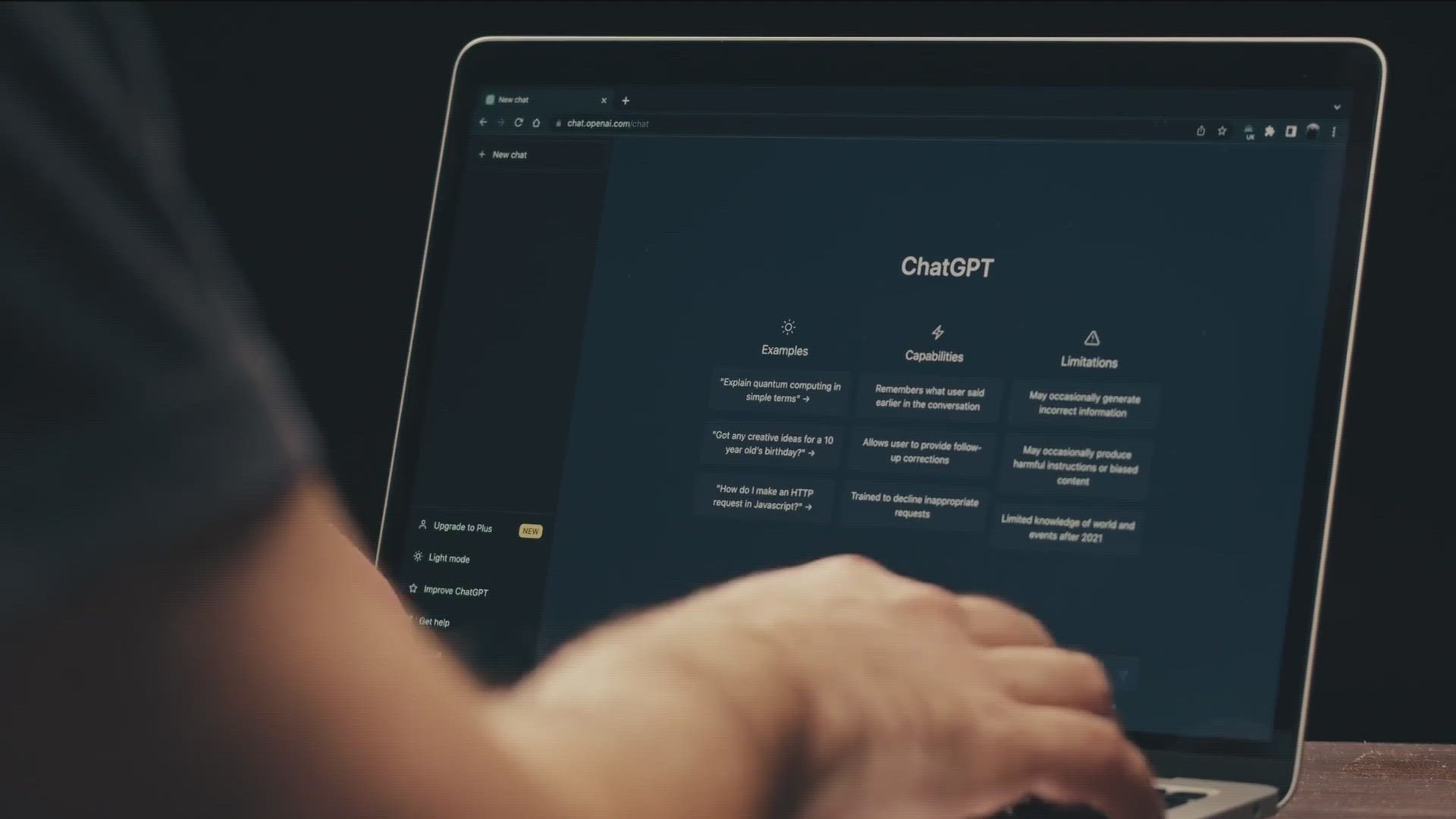IDAHO, USA — Artificial intelligence gets more ingrained in people’s lives every single day — including the lives of our youngest generation.
But how are educators around the Treasure Valley responding? Jon Buckridge, Nampa High School English teacher, said although technology in the classroom is not new, AI in the classroom is.
“AI does a spectacular job if you give it an input and you want a specific output,” he said.
Buckridge said students use a variety of programs, like CHAT GPT and Google's Bard. Since CHAT GPT is fairly well known, KTVB wanted to put its abilities to the test.
After plugging in one of Buckridge’s prompts, it took the chatbot about 39 seconds to write an entire essay.
After reading CHAT GPT's answer, Buckridge pointed out several shortfalls. One, the program did not cite any textual evidence. It also used personal pronouns and did not format the essay correctly.
In summary, he said AI simply does not follow directions. Because of that, Buckridge believes it is fairly easy to tell whether students solely use AI for an assignment.
“A student's capacity for dishonesty is really blown out of proportion,” he said. “In the entirety of the year, I have seen two students, and they weren’t in my class, turn in AI-generated writing assignments.”
Buckridge thinks both students cheated because they simply wanted to see if they could get away with it. But freshman Akiya Taylor said some students still use AI behind their teacher’s back and do not get caught.
“There are a few people I know that have used [AI] behind the teacher’s backs to get stuff done or cheat on tests and get better grades without teachers knowing,” she said.
Despite the sneaking around, Taylor said there are benefits to using AI. She has used the technology to help with science, math and English assignments.
Taylor said it is a great brainstorming partner when she gets stuck on something.
“[It helps] figure out what you want to say and how to describe stuff,” she said. “It’s almost like a second teacher.”
Buckridge agrees. He actually teaches students how to use AI programs responsibly. The more teachers embrace AI, the less likely students are to cheat.
In his eyes, AI is just another resource for students.
“I’ve made it a tool,” Buckridge said. “This exists; it’s going to become more popular; here’s how you can use it. Once you build the student's capacity, develop that schema for their understanding of that technology, then they're just going to excel.”
But like most things, there are some fears of the unknown. Greg Heideman, Lone Star Middle School principal, said his middle schoolers have not explored AI all that much.
But just because they have not, does not mean they won’t.
“Our challenge, like anything else, is how do we stay ahead? How do we manage? How do we communicate with parents?” Heideman said.
Right now, school administrators like Heideman are mostly on their own navigating the evolving technology. A State Board of Education spokesperson told KTVB it has not discussed AI in schools, and someone with the Idaho Department of Education said they are just now starting those conversations with districts.
To deal with more students using AI, Heideman said they will likely implement school-wide guidelines for educators in his building. And it is not just K-12 administrators figuring out how AI fits into education; Boise State University created an “AI in Education” taskforce in January.
Right now, it is mostly up to individual professors to decide how and if they use AI, said Leif Nelson, learning technology solutions executive director. He helps run the group.
“We help faculty just understand what [AI] is, how it works, what’s the potential, what are the pros and cons so that they can have conversations with their students and navigate that together,” he said.
Although cheating happens, Nelson believes BSU’s academic integrity program holds students accountable. If someone did cheat, staff members look at why that student cut corners — did they not understand the assignment? Or was there something else going on?
Nelson said AI will only grow more popular, so the group is meeting over the summer to plan various workshops and events to support staff.
He is not the only one looking ahead. Embracing AI and evolving with it might be the best course of action to help students stay on track, Buckridge said.
“It's like any technology,” he said. “It's going to get to the point where if [students] just plugged in the prompt, it would fool any teacher out there. It's just a matter of how you're going to integrate the changing technology.”
Watch more Local News:
See the latest news from around the Treasure Valley and the Gem State in our YouTube playlist:

